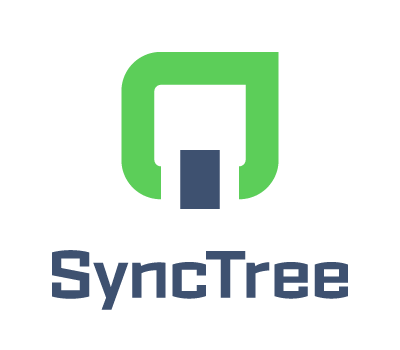Description

DreamFactory

SyncTree
Comprehensive Overview: DreamFactory vs SyncTree
DreamFactory and SyncTree are both platforms designed to simplify and enhance the process of API management and development. However, they cater to different needs and have unique features that set them apart.
a) Primary Functions and Target Markets
DreamFactory:
- Primary Functions:
- DreamFactory is an open-source platform developed to automatically generate REST APIs from various data sources. Its capabilities include API management, user authentication, role-based access control, real-time integration, and logging and monitoring. It supports connections to SQL/NoSQL databases, file storage systems, email servers, and more.
- Target Markets:
- DreamFactory primarily targets developers and companies that need to quickly deploy and manage APIs without extensive backend work. Its users typically operate in sectors such as IT services, software development, and businesses requiring rapid software prototyping and deployment.
SyncTree:
- Primary Functions:
- SyncTree is focused on providing a seamless API ecosystem platform. It emphasizes API management as a service, allowing users to create, manage, and share APIs easily. SyncTree offers features like API gateway, analytics, security features, and multicloud API support.
- Target Markets:
- SyncTree targets enterprises across various industries, emphasizing businesses that need to manage multiple APIs or integrate with various services seamlessly. It appeals to API-based business models, telecommunications, finance, and industries undergoing digital transformation requiring robust API management.
b) Market Share and User Base
-
DreamFactory:
- Being an open-source and versatile tool, DreamFactory has a significant user base among small to medium-sized enterprises and individual developers who favor open-source solutions. Its market share is more fragmented, given the open-source nature and the varied industries it serves. It benefits from a strong community around its open-source projects.
-
SyncTree:
- SyncTree is more enterprise-focused and aims at larger organizations looking for sophisticated API management solutions. Its market share is more aligned with niche enterprise services and it may not have as broad a user base as DreamFactory, but potentially has high-value engagements with its clients due to its enterprise readiness.
c) Key Differentiating Factors
-
Open-source vs. Enterprise Focus:
- DreamFactory is open-source, offering flexibility, and community-driven development which is appealing to many developers and smaller firms. SyncTree, however, is more focused on providing a comprehensive enterprise-grade service that supports complex API management requirements.
-
Ease of Use and Deployment:
- DreamFactory offers auto-generated APIs from various data sources with minimal setup, which is great for rapid development and deployment. SyncTree provides a more robust platform for managing large-scale API ecosystems with features catering to enterprise needs.
-
Feature Set and Integration Capabilities:
- SyncTree provides sophisticated API management capabilities, including analytics, security, and multicloud support, which may appeal to large businesses with complex integration needs. DreamFactory, while offering a comprehensive set of features, is primarily focused on enabling quick API generation and connection.
-
Community and Support:
- DreamFactory, with its open-source nature, benefits from a vibrant community that contributes to its development. SyncTree, on the other hand, provides professional support services that are preferred by enterprise clients looking for reliability and robust support.
In summary, while both DreamFactory and SyncTree are powerful tools in the API management space, they cater to different markets and user needs. DreamFactory is preferred for its agility and open-source flexibility, while SyncTree is suited for enterprises needing robust API management capabilities.
Contact Info

Year founded :
2021
Not Available
Not Available
Netherlands
Not Available

Year founded :
2006
+1 310-251-1330
Not Available
United States
http://www.linkedin.com/company/synctree-inc.
Feature Similarity Breakdown: DreamFactory, SyncTree
DreamFactory and SyncTree are both middleware platforms that facilitate the development and integration of APIs. While they share some core functionalities, each has its unique features and interface designs that cater to different user needs. Here’s a breakdown of their similarities and differences:
a) Core Features in Common
-
API Management: Both DreamFactory and SyncTree provide comprehensive tools for creating, managing, and deploying APIs. They help in transforming various data sources into standardized RESTful APIs.
-
Database Connectivity: These platforms support connections to multiple databases such as MySQL, PostgreSQL, SQL Server, and NoSQL databases. They facilitate data integration and seamless data operations across various storage systems.
-
Authentication and Security: They offer robust authentication mechanisms such as OAuth, JWT, and API key management to secure the APIs. Additionally, both platforms provide role-based access controls to manage user permissions effectively.
-
Code-Free API Generation: DreamFactory and SyncTree allow users to generate APIs without extensive coding, making API development faster and more accessible for non-developers.
-
Scalability and Performance Optimization: Both platforms are designed to efficiently handle large volumes of data and concurrent API requests, ensuring high performance and scalability.
b) Comparison of User Interfaces
-
DreamFactory: DreamFactory is known for its straightforward and intuitive user interface that accommodates both technical and non-technical users. The dashboard provides easy access to key functionalities like API creation, role management, and data connections, with a clear emphasis on simplification for rapid development.
-
SyncTree: SyncTree offers a more modern and visually engaging interface, focusing heavily on a graphical user interface (GUI) for API flow design. It tends to be more feature-rich in terms of data workflow visualization, allowing users to map out complex data interactions visually, which is particularly appealing to those who prefer a more graphical approach to API and integration design.
c) Unique Features
-
DreamFactory:
- Automatic API Generation: DreamFactory is renowned for its ability to automatically generate REST APIs from various databases and services, significantly speeding up the API development process without the need for manual coding.
- Scripting and Customization: It offers server-side scripting with V8JS and Node.js for custom business logic and data manipulation.
-
SyncTree:
- Integrated Developer Tools: SyncTree provides a comprehensive suite of developer tools, including integrated debugging and monitoring tools, to enhance the development experience.
- Event-Driven Architecture: SyncTree supports an event-driven architecture, allowing for more dynamic integration and real-time data processing capabilities across different systems and services.
In summary, while DreamFactory and SyncTree share several core features focusing on API management and integration, they are tailored to different user preferences and needs when it comes to their interfaces and unique capabilities. DreamFactory stands out with its automatic API generation and server-side scripting options, whereas SyncTree shines with its modern UI and event-driven architecture.
Features

Not Available

Not Available
Best Fit Use Cases: DreamFactory, SyncTree
DreamFactory and SyncTree are both focused on API management and integration but serve slightly different niches within this space. Here’s a breakdown of their best fit use cases and how they cater to different industries and company sizes:
DreamFactory
a) For what types of businesses or projects is DreamFactory the best choice?
-
Businesses Needing Rapid API Generation:
- DreamFactory excels at quickly generating REST APIs from various databases, making it ideal for businesses that need to develop backend services quickly and efficiently.
- This is particularly useful for companies with existing databases looking to modernize their applications with minimal redevelopment.
-
Projects Involving Diverse Data Sources:
- DreamFactory can integrate with a wide range of data sources, including SQL and NoSQL databases, making it suitable for projects that require data aggregation from different systems.
-
Medium to Large Enterprises:
- Enterprises with complex IT infrastructures can benefit from DreamFactory’s ability to handle multiple databases and integrate legacy systems into modern applications.
-
IoT and Microservices Architectures:
- It supports projects involving IoT by providing necessary APIs for data communication and management.
- It's also useful in microservices architectures due to its capability to create standardized and scalable APIs.
d) How does DreamFactory cater to different industry verticals or company sizes?
-
Industry Verticals:
- DreamFactory is suitable for various industries such as healthcare, finance, and manufacturing where secure API generation from multiple databases is necessary.
- It supports compliance with industry standards like HIPAA for healthcare, ensuring secure data handling.
-
Company Sizes:
- While DreamFactory is powerful in complex setups preferred by large enterprises, its ease of use and ability to quickly deploy APIs make it suitable for small to medium businesses looking to scale up rapidly.
SyncTree
b) In what scenarios would SyncTree be the preferred option?
-
Businesses Seeking Low-Code/No-Code Integration:
- SyncTree excels in providing a low-code/no-code platform for API integration and management, making it ideal for businesses looking to reduce their dependency on specialized IT staff.
-
Startups and SMEs with Limited Resources:
- Small and medium-sized enterprises as well as startups can take advantage of SyncTree’s ease of use and cost-effectiveness to integrate and manage APIs without needing extensive technical expertise.
-
Quick Time-to-Market Projects:
- SyncTree supports rapid prototyping and development, making it an excellent choice for projects that have aggressive timelines for deployment.
-
Companies Building and Managing Connected Applications:
- Ideal for businesses focusing on building applications that require seamless integration with multiple external services and platforms.
d) How does SyncTree cater to different industry verticals or company sizes?
-
Industry Verticals:
- SyncTree is highly relevant in verticals like retail, logistics, and social apps where quick integration of different services such as payment gateways or social media platforms is crucial.
- Its simplicity also helps in sectors like education where IT resources may be limited.
-
Company Sizes:
- Designed with small to medium-sized businesses in mind, SyncTree’s platform allows these companies to leverage API management capabilities that would otherwise be resource-intensive.
- The scalability of SyncTree ensures that as these businesses grow, they can continue to manage higher complexity without changing platforms.
In summary, DreamFactory is best suited for medium to large enterprises and complex projects that require rapid and secure API generation from diverse sources. SyncTree, on the other hand, appeals more to startups and SMEs with its low-code approach, allowing for rapid development and integration with minimal technical overhead.
Pricing

Pricing Not Available

Pricing Not Available
Metrics History
Metrics History
Comparing teamSize across companies
Conclusion & Final Verdict: DreamFactory vs SyncTree
To provide a comprehensive conclusion and final verdict for DreamFactory and SyncTree, it is important to evaluate them on key parameters including functionality, ease of use, scalability, support, and cost.
Conclusion:
a) Best Overall Value:
After considering all factors, the best overall value depends on the specific needs of the user. Broadly speaking, DreamFactory offers strong data-driven API generation capabilities with excellent scalability, making it a great choice for development teams needing robust backend solutions quickly. Conversely, SyncTree excels in providing a code-free environment and an easy-to-use interface, catering to those who prioritize simplicity and integration speed over complex feature sets.
b) Pros and Cons of Each Product:
DreamFactory:
- Pros:
- Robust API management and automation tools.
- Strong backend integration capabilities with different databases.
- Extensive community support and documentation.
- Scalable solution for growing businesses.
- Cons:
- Steeper learning curve for beginners.
- May require more technical expertise to fully utilize its potential.
- Higher cost for enterprise-level features.
SyncTree:
- Pros:
- User-friendly, code-free platform ideal for quick integrations.
- Visual workflow tools that simplify application development.
- Ideal for small to medium businesses that need rapid deployment.
- Cons:
- Limited advanced features compared to DreamFactory.
- May not scale as effectively for large-scale enterprise applications.
- Potential limitations in customization for complex requirements.
c) Recommendations:
For technical teams and enterprises in need of robust API management, DreamFactory is recommended due to its comprehensive features and scalability. It is ideal for environments where backend complexity can be managed with technical expertise.
For startups or small businesses seeking simplicity and speed in connecting various applications without engaging in heavy coding, SyncTree offers an attractive package. It is particularly useful for rapid deployment needs and users who prefer a more visual-based development process.
Final Recommendation: Assess your organization’s current technical capabilities, resource availability, and scale requirements. DreamFactory is better suited for those requiring high customization and scalability, whereas SyncTree is ideal for those aiming for ease of use and rapid deployment with less focus on extreme customization.
Add to compare
Add similar companies




